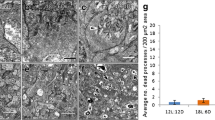Abstract
Week-old White Leghorn chicks were randomly divided into two light control chambers. One chamber was equipped with clear incandescent light with a maximum intensity of 0.66µW cm−2 mµ −1 and the remaining chamber was equipped with blue light with a maximum intensity of 0.015µW cm−2 mµ −1. Both groups received a daily photoperiod of 14 hours' light and 10 hours' dark. Low intensity blue light caused a definite eye enlargement after 7 weeks of exposure.The eye enlargement was not related to an increase release rate of thyroidal131I or oxygen consumption. Intraocular pressure was no greater in the enlarged eyes than in control eyes.Length of exposure to light and dark cycles caused a daily rhythm in intraocular pressure which was not different in the two light treatments. Associated with the eye enlargement was an exophthalmic condition during the developmental stages, a slight flattening of the cornea, and definite alterations in visual parameters resulting in an axial length myopia. Some lenticular contribution to the myopia was inferred by reason of an increase in size of the lens.
Zusammenfassung
Eine Woche alte Leghorn-Küken wurden nach einer Zufallsverteilung in zwei Lichtkammern gegeben.Die eine Kammer war ausgerüstet mit klaren Glühlampenlicht mit einer Maximalintensität von 0,66µW cm−2mµ −1, und die andere Kammer mit blauem Licht mit einer Maximalintensität von 0,015µW cm−2mµ −1. Beide Gruppen erhielten täglich 14 Stunden Licht bei 10 Stunden Dunkelheit. Blaues Licht geringer Intensität verursachte nach 7 Wochen eine eindeutige Augenvergrösserung.Sie war nicht mit einer Zunahme der131I Ausscheidungrate aus der Schilddrüse oder des Sauerstoffverbrauchs verbunden. Der Augeninnendruck war bei den Versuchstieren nicht grösser als bei den Kontrolltieren. Die Länge der Lichteinwirkung sowie der Dunkelperioden verursachte einen Tagesrhythmus des Augeninnendruckes,der bei den Tieren in den beiden Lichtkammern gleich war.Mit der Augenvergrössung verbunden war während des Entwicklungsstadiums ein Exophthalmus, eine leichte Abflachung der Cornea und eine sichere Veränderung des Visus durch Myopie. Eine Beteiligung von Linsenveränderungen an der Myopie wird wegen des Anstiegs der Linsengrösse angenommen.
Resume
On a placé des poussins Leghorn choisis au hasard dans deux chambres lumineuses. La première de ces chambres était équipée de lampes à incandescence claires ayant une intensité maximum de 0,66µW cm−2 mµ −1, la seconde de lampes bleues d'intensité maximum de 0,015µW cm−2 mµ −1. Chacun des deux groupes reçut de la lumière durant 14 heures avec une période d'obscurité de 10 heures.La lumière bleue de faible intensité a provoqué après 7 semaines un agrandissement très net des yeux des poussins. Cet agrandissement ne fut cependant pas lié à une augmentation de la sécrétion thyroïdale de131I ou de la consommation en oxygène. La pression interne de l'oeil ne fut en outre pas supérieure à celle des bêtes de contrôle. La durée d'action de la lumière et de l'obscurité ont provoqué un rythme journalier de la pression interne de l'oeil identique pour les bêtes des deux chambres lumineuses. Pendant le stade de croissance, on a constaté — parallèlement à l'agrandissement des yeux — de l'exophtalmie, un léger aplatissement de la cornée et une modification certaine de la vue par myopie. On admet que la myopie est due à une modification de la lentille suite de l'agrandissement de celle-ci.
Similar content being viewed by others
References
DAVSON, H. (1962): The Eye. Academic Press, New York and London, p. 160.
HARRISON, P.C. and McGINNIS, J. (1967): Light induced exophtalmos in the domestic fowl. Proc.Soc.exp.Biol. (N.Y.), 126: 308–312.
JENSEN, L.S. and MATSON, W.E. (1957): Enlargement of avian eye by subjecting chicks to continuous incandescent illumination.Science,125:741.
LAUBER, J.K. and McGINNIS, J. (1966): Eye lesions in domestic fowl reared under continuous light. Vision Res., 6: 619–626.
LAUBER, J.K., SHUTZE, J.V. and McGINNIS, J. (1961): Effects of exposure to continuous light on the eye of the growing chick.Proc.Soc.exp.Biol. (N.Y.), 106: 871–872.
LAUBER, J.K., McGINNIS, J. and BOYD, J. (1965): The influence of miotics,diamox and vision occluders on light-induced buphthalmos in domestic fowl. Proc.Soc.exp.Biol. (N.Y.), 120: 527–575.
Author information
Authors and Affiliations
Additional information
This investigation was supported in part by funds from Medical and Biological Research by State of Washington Initiative No. 171, and by Research Grant No. NB03 770-05 from the Division of General Medical Sciences, U.S. Public Health Office. Scientific Paper No. 3183, College of Agriculture, Washington State University, Pullman. Project Nos. 1677 and 1895.
Rights and permissions
About this article
Cite this article
Harrison, P.C., Bercovitz, A.B. & Leary, G.A. Development of eye enlargement of domestic fowl subjected to low intensity light. Int J Biometeorol 12, 351–358 (1968). https://doi.org/10.1007/BF01553280
Received:
Issue Date:
DOI: https://doi.org/10.1007/BF01553280




